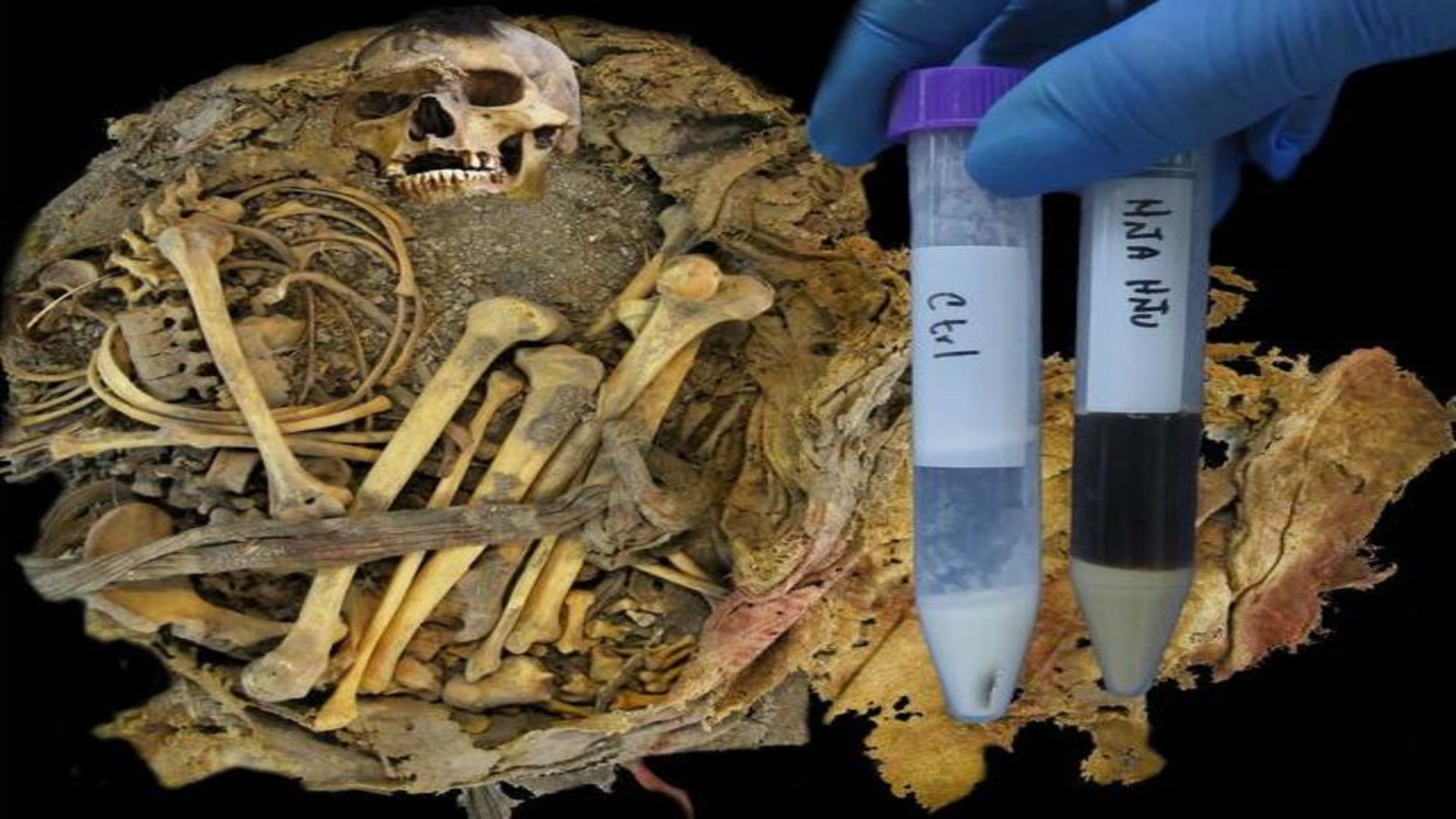Science
Ancient Microbiome of 1,000-Year-Old Zimapán Man Revealed

Remarkably preserved remains of a 1,000-year-old individual, referred to as the Zimapán Man, have provided researchers with valuable insights into ancient human gut microbiomes. Discovered in a cave in Zimapán, a region at the intersection of Mesoamerica and Aridoamerica, his body underwent natural mummification due to the specific conditions within the cave. The findings, published in PLOS One, underscore the significance of this ancient individual in the context of the Otopame culture, one of the long-extinct hunter-gatherer societies of the region.
The Zimapán Man was found wrapped in an intricate funerary bundle, suggesting he held a prominent position within his community. Researchers believe that his well-preserved intestinal tissue and feces offer a detailed portrait of his microbiome, revealing surprising and notable types of bacteria that were present at the time. According to the study, this research expands current understanding of ancient microbiomes and may offer clues about his lifestyle.
Significant Discoveries in Ancient Microbiology
The study, led by Santiago Rosas-Plaza from the National Autonomous University of Mexico, utilized advanced techniques to analyze the remains. The discovery was made in 2014 when residents of El Saucillo, Zimapán, unearthed the mortuary bundle in a rock shelter that provided optimal preservation conditions. The remains included remnants of soft tissue, intestinal fragments, fecal matter, and blood vessels.
Through the application of 16S rRNA gene sequencing, researchers were able to identify various families of bacteria within the Zimapán Man’s microbiome. Notable families included Peptostreptococcaceae, Enterobacteriaceae, and Enterococcaceae, which indicate a long-standing symbiotic relationship with humans. Additionally, the presence of bacteria from the Clostridiaceae family has been previously documented in other ancient Andean mummies, linking the Zimapán Man to a broader cultural context.
The identification of Romboutsia hominis marks a significant milestone, as it had never been found in ancient microbiomes before this study. This finding enhances our understanding of microbial evolution and its historical implications.
Linking Ancient Diets to Microbial Evolution
The authors of the study concluded that integrating anthropological, archaeological, and microbiomic data is essential for unraveling human evolution and its intricate connections with biological and social environments. They noted the potential for the preserved paleofeces to contain authentic ancient gut bacteria, which could further illuminate dietary practices of the time.
The preservation state of the Zimapán Man also highlights the sophisticated techniques employed by his culture to prepare bodies for burial. The study mentioned an analysis of the mathematical composition of the knots in the fabric of the funerary bundle, reflecting a complex arrangement that exemplifies the cultural significance of burial practices.
Master Luisa Mainauo, who has been overseeing the restoration of the mortuary bundle for nearly eight years, aims to exhibit it to the public, not only in Mexico but globally. This initiative could bring greater awareness to the Otopame culture and its historical contributions.
The full study can be accessed in PLOS One, providing additional insights into this groundbreaking research that combines ancient anthropology with modern microbiology.
-

 Lifestyle5 months ago
Lifestyle5 months agoLibraries Challenge Rising E-Book Costs Amid Growing Demand
-

 Sports4 months ago
Sports4 months agoTyreek Hill Responds to Tua Tagovailoa’s Comments on Team Dynamics
-

 Sports4 months ago
Sports4 months agoLiverpool Secures Agreement to Sign Young Striker Will Wright
-

 Lifestyle4 months ago
Lifestyle4 months agoSave Your Split Tomatoes: Expert Tips for Gardeners
-

 Lifestyle4 months ago
Lifestyle4 months agoPrincess Beatrice’s Daughter Athena Joins Siblings at London Parade
-

 Science4 months ago
Science4 months agoSan Francisco Hosts Unique Contest to Identify “Performative Males”
-

 World4 months ago
World4 months agoWinter Storms Lash New South Wales with Snow, Flood Risks
-

 Science5 months ago
Science5 months agoTrump Administration Moves to Repeal Key Climate Regulation
-

 Business5 months ago
Business5 months agoSoFi Technologies Shares Slip 2% Following Insider Stock Sale
-

 Science5 months ago
Science5 months agoNew Tool Reveals Link Between Horse Coat Condition and Parasites
-

 Sports5 months ago
Sports5 months agoElon Musk Sculpture Travels From Utah to Yosemite National Park
-

 Science5 months ago
Science5 months agoNew Study Confirms Humans Transported Stonehenge Bluestones









